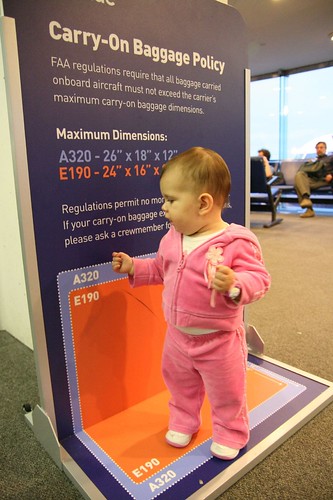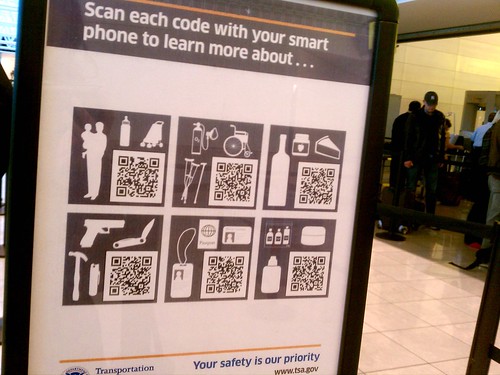With a business or pleasure trip just around the corner, packing your luggage can be both fun and stressful. Not only do you need to account for the clothing that you will need during your trip, you will also need to think about overall weight and what you will place in each piece of your luggage to avoid security issues.
You also need to plan if some of your luggage decides to take a vacation of its own. The IHateTaxis.com team have packed up our luggage so many times for so many different trips, be it for that relaxing week in Hawaii or the five week safari in Tanzania complete with a Kilimanjaro hire.
All IHateTaxis.com team members have had the experience of losing our luggage for several days or have had to deal with a security issue since something we packed was not allowed to go on the plane.
So with lots of experience and the latest security information, we have complied a guide of "what you can and cannot take on the plane", complete with all of our experiences to make your trip as stress-free as possible.
What Can I Take in my Carry-On?
Carry-on luggage refers to your belongings that may be brought with you into the cabin of an airplane. Airlines and airport security have many restrictions regarding carry-on luggage. You must consider the number of bags, their sizes, weights, and most importantly their contents. We here at IHateTaxis.com also have some tips with respect to your carry-on luggage.

Due to limited room available in the cabin on the airplane, all airlines will limit the number of bags you may bring on board. This limit is usually one bag, although small purses and handbags are usually permitted in addition to this bag. A few smaller airplanes will have more restrictions, simply because there is limited room for anything larger than a purse. Some airlines allow their business and first class passengers a greater number of carry-on bags. Regardless, it is always important to check the limitations with the specific airline you are flying.
Things to Pack in Your Carry-on
 |
| Some airports even sell baggies for your toiletries, like this one at London Stansted Airport (STN) |
One way to think about your carry-on is "what items are absolutely essential should my checked luggage be lost?".
Our suggested list includes:
- Wallet or purse (with credit cards, bank cards, cash, travellers cheques/checks)
- Passport
- All medications (prescriptions or otherwise) and medical supplies
- Glasses (in hard-cover case)
- Highly-valued items (camera, laptop, tablet, reader, music player, phone, etc - and cords/chargers)
- Jewelry (note that some high valued gems and stones may require proof of ownership if travelling across borders - better yet, don't take any!)
- Snacks (note that some food types may not travel across borders. For example meat, fresh fruit and veggies, and some dairy products)
- Baby Supplies (bottles1, diapers and wipes, a toy, pacifier, change of clothes, etc)
- Change of clothing (consider the climate at your destination when packing spare clothing)
- Toiletries (toothbrush, toothpaste1, floss, brush/comb, make-up1, hygiene products1, perfume1)
- Child/Infant Car seat (may be permitted if you have purchased a seat for your child)
- Empty water bottle2
- All required documents (paper or etickets for travel, visas, hotel confirmations, travel insurance, etc)
2 Water bottles are allowed on board, provided they do not contain fluid when you go through the security check. By carrying an empty water bottle and refilling (should a water source be available) after security will enable you to stay more hydrated during your trip. Commercially sealed water bottles purchased before security are NOT allowed, unless you empty them first.
Carry-on Items Prohibited
 Do not pack any of the following in your carry-on as they will likely be confiscated by security. Some of these items may be placed in your checked luggage and some cannot travel by commercial air.
Do not pack any of the following in your carry-on as they will likely be confiscated by security. Some of these items may be placed in your checked luggage and some cannot travel by commercial air. Carefully consider why you would need any of these items at your final destination or if they may be obtained when you arrive.
Carry-on items prohibited include:
- Firearms (pistols, flare guns, rifles, BB guns, toy guns, paintball guns) and ammunition
- Knives (including jack-knives, scissors3, swords)
- Weapons (including replicas)
- Tools (power tools and most hand tools3
- Greater than 100 mL of any fluid or gel (baby supplies are often exempt from this rule, provided you are travelling with a baby)
- Select toiletry items (razors, metal nail files, or any items with a sharp or pointed edge3
- Explosive materials
- Sporting goods (hockey sticks, baseball bats, skates, surf boards)
- Gases4
- Pressurized containers (e.g., hair spray bottles, shaving cream, spray paint)
- Matches (usually one package of safety matches or one standard lighter is permitted, but rules do vary)
- Poisons (e.g., fertilizers and other toxic materials)
- Infectious material (laboratory specimens)
- Fiberglass resins
- Peroxides
- Radioactive materials
- Strong magnetic materials
- Corrosives (e.g., drycleaners, car batteries, acids, alkalis, lye, mercury)
- More than 4 lbs or 1.8 Kg of dry ice
3 Note that some countries and airports do allow small nail files, scissors under 4 inches or 10 cm blade length, and smaller tools (screwdrivers, etc). But we strongly recommend packing these in your checked luggage to avoid problems unless you will absolutely need them during your flight.
Please note that the above list is a simplified version derived from multiple government and airport websites and is not complete. Rules and regulations may differ between countries and even between airports within the same country.
We hope you have found our tips for carry-on luggage helpful. If you have your own tips to add, we welcome your comments!
This is just the first of a series we will be doing on luggage - stay tuned for more!
You might also be interested in:
- Our Smart Travel Advice series
- Do We Really Hate Taxis? - the story of how we got our name


No comments:
Post a Comment
Note: only a member of this blog may post a comment.